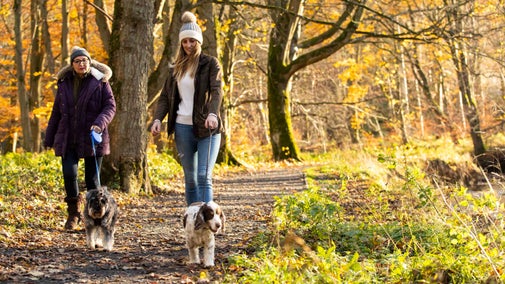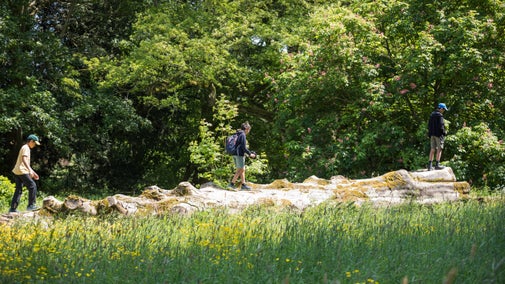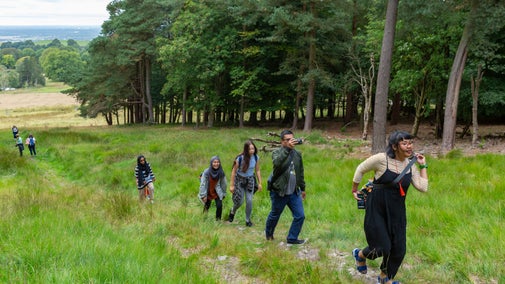
Discover more at Lydford Gorge
Find out when Lydford Gorge is open, how to get here, the things to see and do and more.

Nestled on the edge of Dartmoor, the impressive landscape of Lydford Gorge offers an opportunity to immerse yourself in the wonders of nature. Winding walking trails take you through temperate rainforest with cascading waterfalls and fascinating rock formations carved out by the River Lyd.
From Monday 3 November 2025 only the trails to Whitelady Waterfall and the bird hide are open. The Devil's Cauldron trail and seasonal trails are shut every winter for safety and essential maintenance work. This can include tree work, path work and rock face inspections, so please do not pass any locked gates. We plan to reopen from Saturday 14 March 2026.
The habitat of the gorge is known as ‘temperate rainforest’ which is characterised by high rainfall and humidity and a low annual variation in temperature. These conditions create the perfect conditions for moisture-loving lichens and bryophytes (mosses and liverworts). They are the base of a rich and diverse ecosystem supporting large numbers of insects and the birds and mammals that feed on them.
Most surviving fragments of temperate rainforest in Britain occur on steep-sided slopes above rivers and lakes which have avoided clearance and intensive grazing pressure. So it's important to continue to look after and improve these special places for the future.

Lydford Gorge provides food and shelter for many bird species, including goldcrests. Being the UK’s smallest bird they can be hard to spot, so instead listen out for their very high-pitched calls, although the sound can be too high for some people to hear.
Just off the path by the river, you’ll find an old mine working to peep into. These days it’s barred with a gate to keep humans out but allow other residents in. So it provides a safe habitat for rare greater and lesser horseshoe bats, whose numbers have seriously declined nationally in previous years.
We plan to reopen from Saturday 14 March 2026. This is when the visitor welcome, tea-rooms, second-hand bookshop, and toilets will be open again. And in addition to the walking trails to Whitelady Waterfall and the bird hide, the Devil's Cauldron walking trail, some seasonal routes, and the orchard will be open once more to explore.

Find out when Lydford Gorge is open, how to get here, the things to see and do and more.
Discover how to have a dog-friendly visit to Lydford Gorge, including where to walk, what to be aware of and what facilities are available for your four-legged friend

Discover where to eat when visiting Lydford Gorge, how to find the tea-room, what’s on the menu and what treats you’ll find in the second-hand bookshop.

At Lydford Gorge the best winter adventure is to see Whitelady Waterfall. After heavy rain it’ll be at its roaring best. Get wellies on to splash your way around some fun ’50 things’ activities.

The Tramper will be available to hire again from Saturday 14 March 2026. If you’d like to use your own mobility vehicle to access Whitelady Waterfall please get in touch for further information.

At Lydford Gorge in Devon we've closed a section of the gorge walking trail, which has become unsafe, while we assess the effects of a changing climate on the rare temperate rainforest it contains.

Discover the history of Lydford Gorge from its earliest fossil formations and its importance to the Anglo Saxons and Vikings, to how it influenced the Picturesque and inspired artists.

Plan a visit to one of the special countryside places in our care and discover the benefits of being in the great outdoors. Pack your walking boots and get ready to explore woodlands, valleys and rivers.

Explore some of the finest landscapes in our care on coastal paths, accessible trails, woodland walks and everything in between. Find the best places to walk near you.
